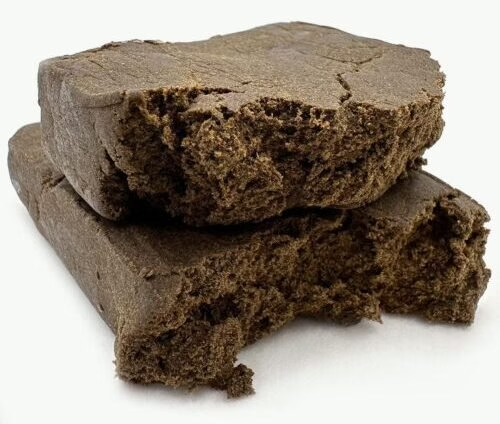Hash vs. Marijuana: What’s the Difference?
For many cannabis enthusiasts, the terms hash and marijuana might seem interchangeable, but they actually refer to distinct products derived from the same plant. Understanding their differences can enhance your appreciation and choice of cannabis products. This article will break down the key differences between hash and marijuana, including their production methods, potency, flavor profiles, and effects.
What Is Hash?
Hash, or hashish, is a concentrated form of cannabis made from the resin glands or trichomes of the cannabis plant. The process of making hash involves isolating and compressing these trichomes, which are rich in cannabinoids and terpenes, into a solid form.
Types of Hash:
- Traditional Hash: Originates from countries like Afghanistan, India, and Morocco. Traditional methods involve separating trichomes from the plant material by sieving or rubbing cannabis buds by hand. The collected trichomes, known as kief, are then heated and pressed to produce hash.
- Bubble Hash: Made using ice water and agitation to separate trichomes from the plant material. The trichomes are then dried and pressed into hash.
- Rosin: Created by applying heat and pressure to cannabis flowers or kief, resulting in a solvent-free extract.
- Butane Hash Oil (BHO): Made by using butane as a solvent to extract cannabinoids from the cannabis plant. This method produces highly potent concentrates.
Characteristics of Hash:
- Potency: Typically contains 40% to 90% THC, depending on the method and quality.
- Flavor: Often rich, spicy, and earthy, with variations depending on the production method.
- Usage: Can be smoked, vaporized, or used in edibles. It is also sometimes added to marijuana to enhance potency.
What Is Marijuana?
Marijuana, also known as cannabis or weed, refers to the dried flowers, leaves, and stems of the cannabis plant. It’s the most common form of cannabis used for smoking, vaporizing, or cooking.
Production of Marijuana:
- Cultivation: Marijuana is grown from cannabis seeds, with cultivators focusing on the flowering stage for optimal potency and flavor.
- Harvesting: Once mature, the cannabis plant is harvested. The flowers are then dried and cured to improve their flavor and potency.
- Processing: After curing, marijuana can be used in various forms, including flowers for smoking or vaporizing, and oils or tinctures for medicinal use.
Characteristics of Marijuana:
- Potency: THC content typically ranges from 10% to 30%, though some strains can exceed this.
- Flavor: Flavors vary widely depending on the strain, ranging from herbal and earthy to fruity, citrusy, or spicy.
- Usage: Versatile in consumption methods including smoking, vaping, edibles, tinctures, and topicals.
Key Differences Between Hash and Marijuana
- Potency:
- Hash: Due to its concentration of trichomes, hash is generally much more potent than marijuana. The THC content can range from 40% to 90%, making it a stronger option for those seeking a more intense effect.
- Marijuana: Typically has a lower THC content compared to hash, usually between 10% and 30%. The effects are milder and may be more suitable for everyday use.
- Flavor and Aroma:
- Hash: Has a distinct, rich flavor that can be spicy and earthy. The flavor profile can vary based on the production method and quality of the hash.
- Marijuana: Flavor depends on the strain and can range from sweet and fruity to pungent and diesel-like. High-quality marijuana often has a fresh, herbal aroma with abundant trichomes.
- Effects:
- Hash: The effects of hash can be more intense and immediate due to its high THC concentration. Users often report a more potent high, which can be both cerebral and physical.
- Marijuana: The effects of marijuana vary by strain. Indica strains tend to offer relaxing, sedative effects, while sativa strains provide more energetic and euphoric sensations.
- Consumption Methods:
- Hash: Can be smoked, vaporized, or incorporated into edibles. It is generally used in smaller quantities due to its potency.
- Marijuana: Can be smoked, vaporized, used in edibles, or applied topically. It is more versatile in terms of consumption methods and preparation.
Final Thoughts
Hash and marijuana, while both derived from the cannabis plant, offer different experiences due to their unique characteristics. Hash is a potent concentrate with a rich flavor profile, while marijuana is the dried flower that comes in a wide range of strains and flavors. Whether you prefer the intense effects of hash or the diverse experiences offered by marijuana, both have their place in the world of cannabis.
Understanding these differences can help you make informed choices about which product best suits your needs, whether for recreational enjoyment or medicinal purposes. Always consume responsibly and be mindful of your tolerance levels to ensure a pleasant experience with either hash or marijuana.



0 Comments